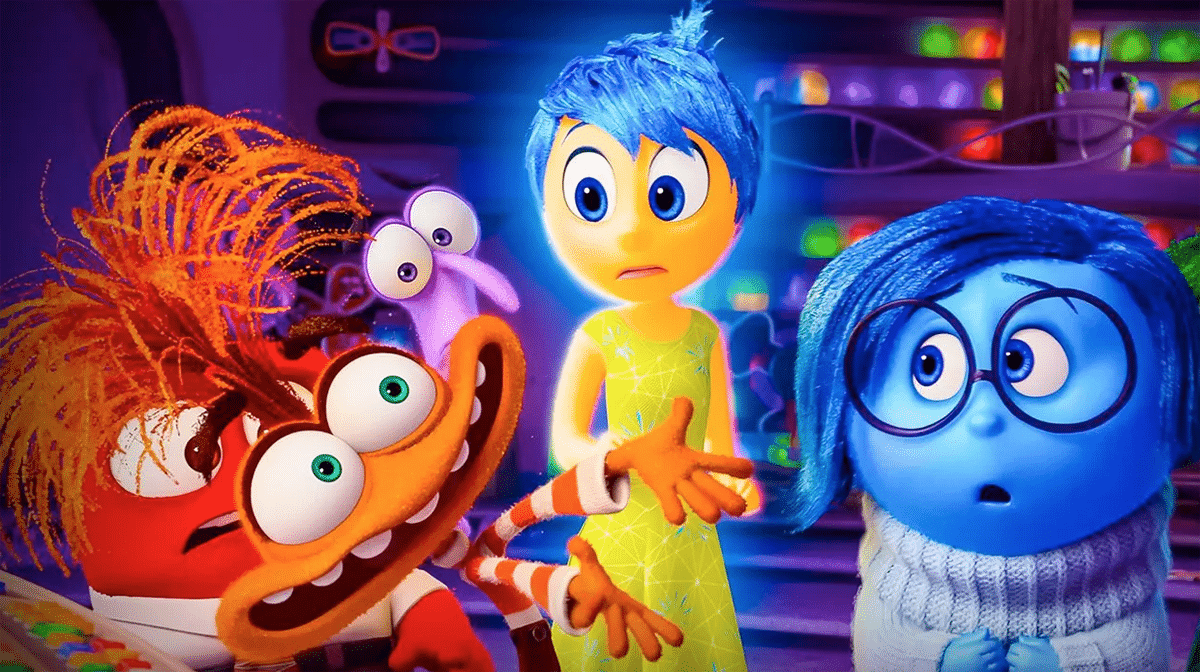One of the most challenging things about growing up is making room for all the new feelings that seem to come bubbling up out of nowhere. With so much on your plate, new feelings can feel like the annoying cherry on the teenage struggle sundae. It’s easy to let one of them take control This is where we pick up with Riley (Kensington Tallman), the girl at the center of 2015’s Inside Out, and its sequel, Inside Out 2.
It’s been a while since Pixar’s first thoughtful and empathetic take on the spectrum of human emotion, and now the gang of core emotions is back and in for some surprises along the way. Riley is a fresh 13, and just when Joy (Amy Poehler), Sadness (Phyllis Smith), Fear (Tony Hale), Disgust (Liza Lapira), and Anger (Lewis Black) have solidified Riley’s sense of self, new feelings disturb to the mix. Anxiety (Maya Hawke), Envy (Ayo Edebiri), Ennui (Adèle Exarchopoulos), and Embarrassment (Paul Walter Hauser) come crashing into headquarters to usher in Riley’s teen years.
These feelings have a different plan for Riley as she navigates the pressure of making the high school hockey team and the potential loss of her best friends, Bree (Sumayyah Nuriddin-Green) and Grace (Grace Lu). Anxiety takes the wheel and the main emotions lose control, setting up a fight for control of Riley.
The new film runs at a tight 96 minutes, and can sometimes feel rushed and frenzied. There are a lot of great ideas here, and Inside Out 2 tries admirably to touch on all of them to mixed effect. Sometimes the rushed nature of the story can add to the themes of the film: Anxiety speeding everything up and overplanning for future, out-of-sight scenarios. Other times, it can make for a harried experience that is less thoughtful than it should (see: the friends of color mainly being used to help Riley, a white girl, on her emotional journey).
However, the way Inside Out 2 breaks down anxiety and how it can run someone’s emotional life is clever and devastating. When Anxiety is in the driver’s seat, it’s easy to see how anyone’s whole sense of self can be destroyed and rebuilt, with anxious and self-defeating ideals touching even innocuous memories, changing core beliefs and memories. When Riley’s new emotion, depicted as highlighter orange and rigid, speaks plainly: “I’m not good enough,” it’s a heartwrenching revelation. For those of us who deal regularly with anxiety (this author included), it hits like a freight train.
Aside from the heavy subject matter at the heart of the film, there are delights to be found in the new character designs and voice acting. Envy has big, ogling eyes. Anxiety is frazzled orange and speaks in tight, quick expressions. Ennui is all angles and cool detachment, armed with a smartphone console control. Embarrassment is big, but quiet – taking up a lot of space but mostly blushing and then flattening herself on the console. The performances from Hawke, Edebiri, and Exarchopoulos are all pitch-perfect, matching their respective emotions exactly.
Watching Inside Out 2, I couldn’t help but think about the kids or early teenagers who will see this and gain an understanding of emotions that take some adults decades of therapy to name, if at all. It’s a potent way to grow emotional literacy, entertaining as it educates.

